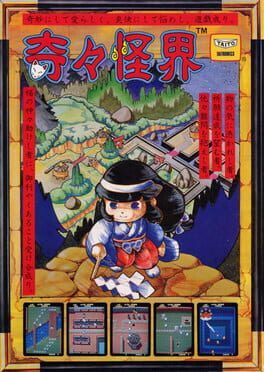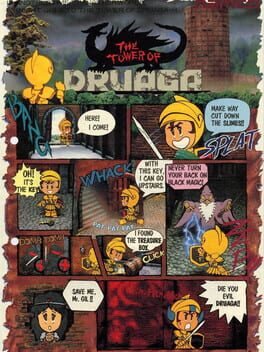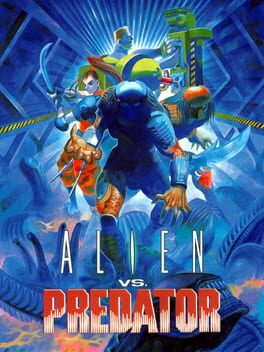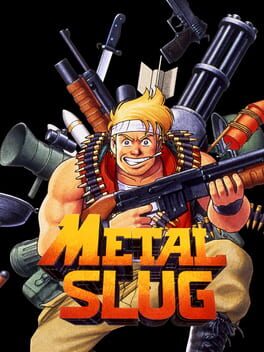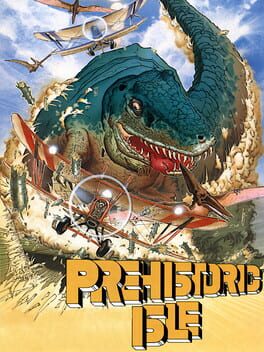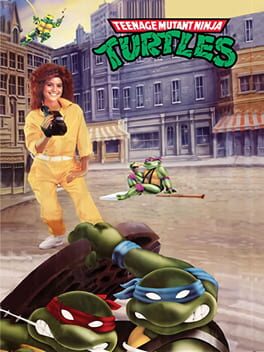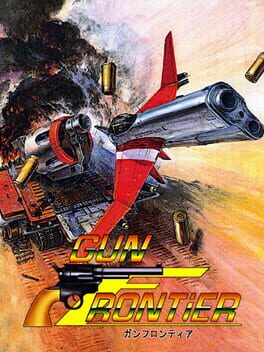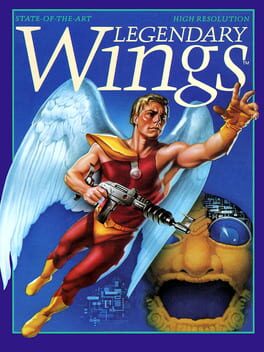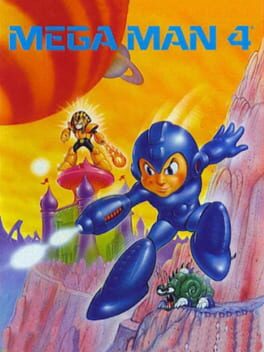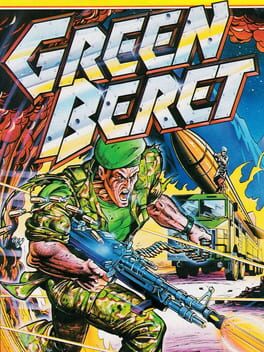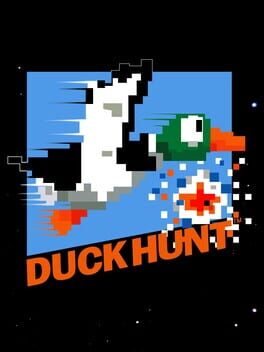ogremode
1986
1984
Tower of Druaga is probably the first great social game; and like the first week of Pokémon Go, like long offline MMOs, it's impossible to play Druaga the way it was meant to be played: at an arcade with other players, swapping tips, theories, or ideas as to how to get to the next floor in the tower of Druaga. It's no wonder this didn't catch on in the States, where you play arcade games with your friends, if you play them with anyone at all.
As it is today, Tower of Druaga is, genuinely, a fun combat puzzle game. I'm a fan of NES The Legend of Zelda's combat, and that same simple swordplay is here almost verbatim, though there's a little more friction here; the item-based puzzle/combat loop of Zelda clearly starts here (Miyamoto is an outspoken fan of this game). The puzzle solutions are fun to do, even if the solutions themselves are complete insane. To find treasure chests, you will rotate your joystick three times; you will swing your sword from your starting spot, but first you will turn your character so they're not facing the outside wall so when you do you don't also destroy your crucial pickaxe; you will pass through one enemy and then and only then kill three of a different enemy type.
I had a good time playing up the tower, sincerely marveling at its tricks and what it asked of you. Really worth playing for a while to see whats so special about it. Don't even feel bad using a guide. For a game like this, the guide isn't cheating so much as it is an analog to that social experience that's impossible to get today.
As it is today, Tower of Druaga is, genuinely, a fun combat puzzle game. I'm a fan of NES The Legend of Zelda's combat, and that same simple swordplay is here almost verbatim, though there's a little more friction here; the item-based puzzle/combat loop of Zelda clearly starts here (Miyamoto is an outspoken fan of this game). The puzzle solutions are fun to do, even if the solutions themselves are complete insane. To find treasure chests, you will rotate your joystick three times; you will swing your sword from your starting spot, but first you will turn your character so they're not facing the outside wall so when you do you don't also destroy your crucial pickaxe; you will pass through one enemy and then and only then kill three of a different enemy type.
I had a good time playing up the tower, sincerely marveling at its tricks and what it asked of you. Really worth playing for a while to see whats so special about it. Don't even feel bad using a guide. For a game like this, the guide isn't cheating so much as it is an analog to that social experience that's impossible to get today.
1994
Capcom's 1994 Alien vs. Predator is THE deluxe beat them up experience. The art direction is incredible, the different characters movesets are (mostly) unique, and the game is satisfying to play, with luxurious hit stop that feels great in the hand. This feels like the high bench mark of the genre, and it was fun and simple enough for me to play through the whole game. Still, there's just something lacking about this genre for me. More complicated action could help, but the real issue is I'm playing what is ultimately a social genre by myself.
1988
I played the PCE version, making heavy use of the rewind feature of Retroarch. Really wildly difficult, and gets in its own way. Has a B-Wing style upgrade system. The art is pretty bland. Cannot recommend this one for basically any reason.
(I spoil the ending of the game in the last paragraph.)
This is the first Armored Core game I've played, though I'm a massive fan of FromSoft's Souls games, and I was looking forward to checking out their other major game series. I came away loving it, and it left me really wanting to explore the earlier games.
The action of the game is excellent, fun and impressive, though rarely very difficult. Like the Souls games, attacks are grounded in their animations, though most of the projectile weapons are near instant. The real limiting factor is that each of your four weapons, once it expends its ammunition, is sent into cooldown. The loop of the action is juggling these four cooldowns while looking for opportunities to get a hit in on the enemies, as well as managing your boosting and stagger bars. Each enemy has a stagger bar, though the vast majority of enemy types are one or two-hit fodder enemies, called MTs, which do more damage as the game goes on but never become harder to kill. There are two or three tiers of regular enemies, each requiring more damage as you go up the tier, then there are enemy AC/LC enemies, which are similar to your own ship. Fights against other style of human NPCs are always fun in the Souls games, and they're great here, and there's a lot of them, as well as arena fights which are one on one. There are only a few boss enemies, but they're all unique and fun to fight. There's the usual genre of FROM bosses—action/skill tests like Balteus; puzzle-y bosses like the helicopter, which can be trivialized by staying underneath it; and then finally the Stormruler style cinematic fight (Ice Worm) where you must use a specific weapon to take it down.
Your weapon choices are limited primarily by two stats--first, the encumbrance stat, which is determined by your legs. The heavier the leg part, the more you can carry, though you might be slower. The other limiting stat is your generator. Generally, generators with more energy are heavier, limiting your choices for your other parts. Certain weapons work better with certain AC designs—each part—head, arms, cores, legs, computer, and generator—has specific stats that make them better for fast weapons, slow weapons, energy weapons, melee weapons, long distance, medium distance, and so on. You're rewarded for building highly specialized ACs, and certain load-outs will work better in different situations.
The game is all about customizing; the tension between expression and optimization, as well as the extreme amount of possibilities, reminded me of playing God Hand. I felt different parts of my action game player tendencies butt up against each other. On the one hand I wanted to find the right solution for every fight or kind of fight, and on the other hand I wanted to choose one weapon set and stick to it, like I tend to do in Dark Souls games. So I did both. For most of the three play throughs I've done so far, I used a medium weight AC, plasma whip and Zimmerman shotgun, the SOUP missiles and the Songbirds, and I painted it like the Gundam Ez8. For certain bosses I swapped over to a heavy, fast Guntank style build, where it was beneficial to have the hard hitting, heavy weapons be able be fired while still maintaining your momentum.
This tension between builds towards ends and builds as an identity, towards a particular mastery, seems to be reflected in the reviews and comments you see about builds in this game. On the one hand, there's the group that embrace modifying your equipment towards whatever end (who mostly appear to be seasoned AC players), and on the other side, there are players who are searching for the best build for them. In most mecha stories, as a rule, changes to the fundamental composition of the robot is rare; practically speaking, designing a completely new kind of Gundam for one-off episodes is not practical, and in general, a characters identity is often wrapped up in whatever kind of mecha they pilot. Amuro Ray is, narratively and iconagraphically, the RX-78-2 Gundam (nu Gundam etc. notwithstanding). In Dia Lucina's Armored Core 6 review, she says "Armored Core VI isn’t about perfecting a build, it’s about understanding that the Core is the persistence of identity, everything else can and should be swapped to suit the needs of the job"--but this is generally only true for the player character. On Rubicon, with few exceptions, every NPC pilot we encounter is tied to a specific Armored Core. Those that do change Cores, into bigger and badder machines, are typically only pilots that are, narratively at least, like the player character in their pilot mastery. Maybe that ability to move between different Cores is the mark of the great Core pilot; and the game forcing you into different builds for different fight's is its way of shaping you into a great pilot.
The mission loop is highly addicting--every mission takes between five to fifteen minutes, but it's impossible not to want to jump right back into the next mission. If you want to see the full game you will replay these missions a lot—it takes two NG+ cycles to see every mission and all the story content, NieR style. After you beat a mission for the first time, you can replay it as often as you want in the replay mission section, and when you replay a mission from that menu you get a letter grading. I really would have liked if you automatically got grades for replaying missions in the NG+ cycles. On the other hand, after seeing all the story content the letter grading is a reason for me to keep playing, and trying a mission over and over with different builds until getting the S is sincerely satisfying. I don't tend to think of myself as a score chaser in video games, though I do love playing score based arcade games or character action games. I guess a prerequisite for score chasing for me is that the game feels good to play, and AC6 feels great to play.
The games narrative structure is somewhat of a departure from the Souls games, though I understand its par for the course for AC games. As you get into chapter 3, where you learn that Raven is a name used by AC pilots that make choices, you are given a handful of choices for what mission to take, and one or two in-mission choices about how to complete certain missions. These choices unlock future possible choices, ultimately unlocking a choice in which ending to pursue. In NG+ you see more missions and more dialogue, and in NG++ you see even more changes and a new ending possibility. This felt a lot like NieR Replicant to me, since the narrative is designed with these new game cycles in mind (though, to be clear, playing through the NGs is 100x more fun here). Each NG puts not only the information you have from the prior NGs in new light, but recasts a lot of the main characters dialogue. When a new game cycle starts, the introductory dialogue hits different emotionally.
The narrative is classic Gundam/mecha anime stuff—not only is the mecha a weapon, crucially, piloting the mecha reduces a human being into a weapon. In AC6 this is taken to a dystopian extreme. Your character exists inside the mecha only—the vehicle is your body. As a player playing the character, you only exist during combat or when outfitting your Core for combat. The narrative is satisfying and well written, though a lot of it is delivered in that classic FROM way—sparse cut scenes, menu descriptions. The narrative feels implied. At a certain point in the game, you get connected with the Coral, one part of it named Ayre, who functions somewhat as a ghost haunting you, influencing you; Walter, your handler, constantly talks about his own "friend," though you learn he is not connected by the same way. Instead, he's haunted by the death of an old friend, haunted by a ghost in his own way. The character writing is sparse, but effective. In NG++, you have the option to work for Allmind—ultimately dispersing Coral into AC shells, and the very last line of the game implies that they are waging some kind of war. The Coral then get embodied as ACs, and immediately turn into weapons for some kind of vague war. The final line of the game is Ayre repeating the "engaging combat mode" dialogue spoken at the start of every mission. The Coral's dispersement into bodies is doomed, for themselves and for everyone, because of the particular bodies that they land in.
This is the first Armored Core game I've played, though I'm a massive fan of FromSoft's Souls games, and I was looking forward to checking out their other major game series. I came away loving it, and it left me really wanting to explore the earlier games.
The action of the game is excellent, fun and impressive, though rarely very difficult. Like the Souls games, attacks are grounded in their animations, though most of the projectile weapons are near instant. The real limiting factor is that each of your four weapons, once it expends its ammunition, is sent into cooldown. The loop of the action is juggling these four cooldowns while looking for opportunities to get a hit in on the enemies, as well as managing your boosting and stagger bars. Each enemy has a stagger bar, though the vast majority of enemy types are one or two-hit fodder enemies, called MTs, which do more damage as the game goes on but never become harder to kill. There are two or three tiers of regular enemies, each requiring more damage as you go up the tier, then there are enemy AC/LC enemies, which are similar to your own ship. Fights against other style of human NPCs are always fun in the Souls games, and they're great here, and there's a lot of them, as well as arena fights which are one on one. There are only a few boss enemies, but they're all unique and fun to fight. There's the usual genre of FROM bosses—action/skill tests like Balteus; puzzle-y bosses like the helicopter, which can be trivialized by staying underneath it; and then finally the Stormruler style cinematic fight (Ice Worm) where you must use a specific weapon to take it down.
Your weapon choices are limited primarily by two stats--first, the encumbrance stat, which is determined by your legs. The heavier the leg part, the more you can carry, though you might be slower. The other limiting stat is your generator. Generally, generators with more energy are heavier, limiting your choices for your other parts. Certain weapons work better with certain AC designs—each part—head, arms, cores, legs, computer, and generator—has specific stats that make them better for fast weapons, slow weapons, energy weapons, melee weapons, long distance, medium distance, and so on. You're rewarded for building highly specialized ACs, and certain load-outs will work better in different situations.
The game is all about customizing; the tension between expression and optimization, as well as the extreme amount of possibilities, reminded me of playing God Hand. I felt different parts of my action game player tendencies butt up against each other. On the one hand I wanted to find the right solution for every fight or kind of fight, and on the other hand I wanted to choose one weapon set and stick to it, like I tend to do in Dark Souls games. So I did both. For most of the three play throughs I've done so far, I used a medium weight AC, plasma whip and Zimmerman shotgun, the SOUP missiles and the Songbirds, and I painted it like the Gundam Ez8. For certain bosses I swapped over to a heavy, fast Guntank style build, where it was beneficial to have the hard hitting, heavy weapons be able be fired while still maintaining your momentum.
This tension between builds towards ends and builds as an identity, towards a particular mastery, seems to be reflected in the reviews and comments you see about builds in this game. On the one hand, there's the group that embrace modifying your equipment towards whatever end (who mostly appear to be seasoned AC players), and on the other side, there are players who are searching for the best build for them. In most mecha stories, as a rule, changes to the fundamental composition of the robot is rare; practically speaking, designing a completely new kind of Gundam for one-off episodes is not practical, and in general, a characters identity is often wrapped up in whatever kind of mecha they pilot. Amuro Ray is, narratively and iconagraphically, the RX-78-2 Gundam (nu Gundam etc. notwithstanding). In Dia Lucina's Armored Core 6 review, she says "Armored Core VI isn’t about perfecting a build, it’s about understanding that the Core is the persistence of identity, everything else can and should be swapped to suit the needs of the job"--but this is generally only true for the player character. On Rubicon, with few exceptions, every NPC pilot we encounter is tied to a specific Armored Core. Those that do change Cores, into bigger and badder machines, are typically only pilots that are, narratively at least, like the player character in their pilot mastery. Maybe that ability to move between different Cores is the mark of the great Core pilot; and the game forcing you into different builds for different fight's is its way of shaping you into a great pilot.
The mission loop is highly addicting--every mission takes between five to fifteen minutes, but it's impossible not to want to jump right back into the next mission. If you want to see the full game you will replay these missions a lot—it takes two NG+ cycles to see every mission and all the story content, NieR style. After you beat a mission for the first time, you can replay it as often as you want in the replay mission section, and when you replay a mission from that menu you get a letter grading. I really would have liked if you automatically got grades for replaying missions in the NG+ cycles. On the other hand, after seeing all the story content the letter grading is a reason for me to keep playing, and trying a mission over and over with different builds until getting the S is sincerely satisfying. I don't tend to think of myself as a score chaser in video games, though I do love playing score based arcade games or character action games. I guess a prerequisite for score chasing for me is that the game feels good to play, and AC6 feels great to play.
The games narrative structure is somewhat of a departure from the Souls games, though I understand its par for the course for AC games. As you get into chapter 3, where you learn that Raven is a name used by AC pilots that make choices, you are given a handful of choices for what mission to take, and one or two in-mission choices about how to complete certain missions. These choices unlock future possible choices, ultimately unlocking a choice in which ending to pursue. In NG+ you see more missions and more dialogue, and in NG++ you see even more changes and a new ending possibility. This felt a lot like NieR Replicant to me, since the narrative is designed with these new game cycles in mind (though, to be clear, playing through the NGs is 100x more fun here). Each NG puts not only the information you have from the prior NGs in new light, but recasts a lot of the main characters dialogue. When a new game cycle starts, the introductory dialogue hits different emotionally.
The narrative is classic Gundam/mecha anime stuff—not only is the mecha a weapon, crucially, piloting the mecha reduces a human being into a weapon. In AC6 this is taken to a dystopian extreme. Your character exists inside the mecha only—the vehicle is your body. As a player playing the character, you only exist during combat or when outfitting your Core for combat. The narrative is satisfying and well written, though a lot of it is delivered in that classic FROM way—sparse cut scenes, menu descriptions. The narrative feels implied. At a certain point in the game, you get connected with the Coral, one part of it named Ayre, who functions somewhat as a ghost haunting you, influencing you; Walter, your handler, constantly talks about his own "friend," though you learn he is not connected by the same way. Instead, he's haunted by the death of an old friend, haunted by a ghost in his own way. The character writing is sparse, but effective. In NG++, you have the option to work for Allmind—ultimately dispersing Coral into AC shells, and the very last line of the game implies that they are waging some kind of war. The Coral then get embodied as ACs, and immediately turn into weapons for some kind of vague war. The final line of the game is Ayre repeating the "engaging combat mode" dialogue spoken at the start of every mission. The Coral's dispersement into bodies is doomed, for themselves and for everyone, because of the particular bodies that they land in.
1996
I have a strong memory of seeing a Metal Slug cabinet in a Pizza Hut and becoming immediately engrossed. I can close my eyes and see its attract mode; I can imagine the bright, brown and gray light popping with explosions cast on my face. I can't remember ever playing it, but Metal Slug has maintained a certain fascination for me, and finally getting my hands on it I was very satisfied. Metal Slug is probably the easiest run and gun I've played yet, and it looks and feels alive. The variety of weapons and vehicle sections are wonderful—has an all-timer shotgun.
The biggest surprise was the anti-war theme. I know François Truffaut said it's impossible to make an anti-war video game, but Nazca and team tried. Like in the original run and gun game Green Beret, the stated goal of this game is to rescue POWs (canonically, The Enemy is using POWs as human shields, necessitating the OSP infiltration mission); the POWs in this game all have unique names, lending them a surprising humanity. In the first interview here, Nazca says they hoped "players feel like all the different enemies, big and small, have a life of their own." Enemy soldiers are treated with genuine pathos in its ending scene, as the camera glides over a decimated brown landscape populated with mechanical wreckage and enemy corpses, at one point flying over a unique sprite of a woman weeping at a soldier's grave. After the credits, the games final message is "PEACE FOREVER."
Can't wait to play through the rest.
The biggest surprise was the anti-war theme. I know François Truffaut said it's impossible to make an anti-war video game, but Nazca and team tried. Like in the original run and gun game Green Beret, the stated goal of this game is to rescue POWs (canonically, The Enemy is using POWs as human shields, necessitating the OSP infiltration mission); the POWs in this game all have unique names, lending them a surprising humanity. In the first interview here, Nazca says they hoped "players feel like all the different enemies, big and small, have a life of their own." Enemy soldiers are treated with genuine pathos in its ending scene, as the camera glides over a decimated brown landscape populated with mechanical wreckage and enemy corpses, at one point flying over a unique sprite of a woman weeping at a soldier's grave. After the credits, the games final message is "PEACE FOREVER."
Can't wait to play through the rest.
1989
Played in the 40th Anniversary SNK Collection. Prehistoric Isle is a somewhat interesting shooting game by SNK. The coolest part of the game is its setting--I'm a sucker for for the pulp adventure theme, and piloting a biplane to shoot cavemen and dinosaurs is a good time in and of itself. I also liked the surprising downer of an ending.
This is a pretty standard STG, but it remixes some ideas from other series--the cavemen enemies will jump on your ship if you get too close to the ground (and you don't kill them before they latch on). When they grab onto your ship, they will pull you down a bit. Waterfalls also press you down a little, which is straight out of R-Type II.
The option in the game can be rotated around your ship with the second button, and depending on its orientation to your own ship, it will have different firing styles.
A decent time, but doesn't stand out as much as its sequel.
This is a pretty standard STG, but it remixes some ideas from other series--the cavemen enemies will jump on your ship if you get too close to the ground (and you don't kill them before they latch on). When they grab onto your ship, they will pull you down a bit. Waterfalls also press you down a little, which is straight out of R-Type II.
The option in the game can be rotated around your ship with the second button, and depending on its orientation to your own ship, it will have different firing styles.
A decent time, but doesn't stand out as much as its sequel.
Like The Simpsons, the first TMNT arcade game is an incredible looking beat em up. Like The Simpsons, its a really generous game—its pretty easy, as far as the genre goes, until the bosses, which cost me a lot of imaginary credits. And like The Simpsons, that's about all it is. I still haven't played one of these kinds of games that was exactly satisfying mechanically—it's good enough, simple, and the different characters make me want to play through it again with friends.
1991
I was initially attracted to Taito's STG Gun and Frontier due to its striking ad art—a huge flying pistol. The setting is really unique, mixing somewhat steampunk style science-fiction with Wild West themes. All the vehicles are mixtures of early 20th century war machines—biplanes, tanks—with iconic Western weaponry. Planes are rifles with wings, tanks are revolvers on wheels. Throughout the game, I was surprised and delighted by the enemy and boss designs.
The shooting part is usually pretty strong, but often falls into unfair arcade difficulty that killed me over and over. There's a checkpoint system in this game which can take you pretty far back during difficulty segments which was frustrating. Still, I felt compelled me to play on. The world is really cool, the art is excellent, and there are lots of neat little touches, like the random film being projected when you blow up a certain building. (I got to see all the random film clips because I kept dying.)
This games development is really interesting. This whole shmuplation interview is worth reading. Takatsuna Senba's first original game after Darius 2, and before Metal Black, was a real work of passion—Senba, who by happenstance ended up being an animation director on Mobile Suit Gundam: Char's Counter Attack, did the character art alone in his underwear because Taito was too cheap to turn on the air conditioning; he had to save his work to floppies and change computers because they would eventually overheat. I'm really looking forward to playing his other STG baby, Metal Black.
The shooting part is usually pretty strong, but often falls into unfair arcade difficulty that killed me over and over. There's a checkpoint system in this game which can take you pretty far back during difficulty segments which was frustrating. Still, I felt compelled me to play on. The world is really cool, the art is excellent, and there are lots of neat little touches, like the random film being projected when you blow up a certain building. (I got to see all the random film clips because I kept dying.)
This games development is really interesting. This whole shmuplation interview is worth reading. Takatsuna Senba's first original game after Darius 2, and before Metal Black, was a real work of passion—Senba, who by happenstance ended up being an animation director on Mobile Suit Gundam: Char's Counter Attack, did the character art alone in his underwear because Taito was too cheap to turn on the air conditioning; he had to save his work to floppies and change computers because they would eventually overheat. I'm really looking forward to playing his other STG baby, Metal Black.
1988
Played on Capcom Arcade. It took me a stage or two to realize that you can spin your character around, and in the manual it tells you to use your trigger buttons to spin your guy left or right. After a few stages of that I thought how much better it would feel if it used twin stick controls, just tried it, and was really surprised when that worked. I was already enjoying flying through stages blasting lizard men as a Fist of the North Star character via Tom of Finland, and the freedom of movement added a lot to it.
The game slightly overstays its welcome for me, maybe because I wasn't very good and never had enough money to buy the cool looking weapons, so I had the same weapon for most of the game; still, a shooting game where you're just a guy flying around is pretty novel (only other ones I can think of are ESP Ra.De. and Espgaluda). Each stage is really difficult, but the bosses were pretty fun to fight.
The game slightly overstays its welcome for me, maybe because I wasn't very good and never had enough money to buy the cool looking weapons, so I had the same weapon for most of the game; still, a shooting game where you're just a guy flying around is pretty novel (only other ones I can think of are ESP Ra.De. and Espgaluda). Each stage is really difficult, but the bosses were pretty fun to fight.
1986
I played the arcade version. A really weird game, combining an at times very difficult Xevious-style STG with an incredibly slow Rolling Thunder-like. I don't like to abandon arcade games, especially since they're so short, but I just got insanely bored with this one. I played through a few levels waiting for it to get interesting or even halfway fun, and it never did. The NES version of this game sounds a lot more interesting, since it was developed concurrently with Mega Man 2 and uses some of the same assets.
Amazing looking game, and about as generous as beat em up games get—not in difficulty, which is as usual for arcade games cheap as hell, but in the sheer number of levels, animations, attack types (combos with the rest of the family is a cool touch), and Simpsons references. A great time for a Simpsons fan.
1991
While Mega Man 3 felt like more Mega Man, Mega Man 4 feels like even more Mega Man. The addition of the charge blast is nice. I like the iterative nature of Mega Man's development, and here with the slide and charging blast, Mega Man finally feels complete as an action game character.
I realized this time around that I definitely prefer the latter half of the game—the two castles—to the first part where you take out the robots in their own levels, because the game requires you to use your special abilities to make it through the level. I feel like I tend to under use Mega Man's abilities in general, saving them for a challenge or an enemy type that never comes. You only really need to use robot abilities against other robots, which trivialize the fights with them, and that's always disappointing to me—I want to feel like I beat a boss, not like I found the right key to them. The non-robot bosses at the end of the game were pretty fun, and felt like they were designed to be fought rather than puzzled out.
All that said, I really got annoyed at the final boss, where you have to use a certain weapon to damage them—at that point, I was all out of ammunition for that weapon, and had to die and farm drops from enemies to fill that back up. It made me just not want to finish the game.
I'm going to put down the mainline series for now and swap over to X. I'm really interested to see how this series develops into the 16bit era.
I realized this time around that I definitely prefer the latter half of the game—the two castles—to the first part where you take out the robots in their own levels, because the game requires you to use your special abilities to make it through the level. I feel like I tend to under use Mega Man's abilities in general, saving them for a challenge or an enemy type that never comes. You only really need to use robot abilities against other robots, which trivialize the fights with them, and that's always disappointing to me—I want to feel like I beat a boss, not like I found the right key to them. The non-robot bosses at the end of the game were pretty fun, and felt like they were designed to be fought rather than puzzled out.
All that said, I really got annoyed at the final boss, where you have to use a certain weapon to damage them—at that point, I was all out of ammunition for that weapon, and had to die and farm drops from enemies to fill that back up. It made me just not want to finish the game.
I'm going to put down the mainline series for now and swap over to X. I'm really interested to see how this series develops into the 16bit era.
1985
I was surprised by how much there was to like about this arcade game, one of the earliest examples of the "run and gun" genre. It's quite fast, and plays like a rudimentary NES Ninja Gaiden style action game; the enemies can be completely overwhelming as in Spartan X, but the attacks are much more responsive. Your main attack is a knife slash, which forces you to be very close to an enemy before you can kill them. All enemy types except for bosses go down in one hit. You can pick up long range weapon power-ups, which spawn when you kill a certain enemy type. I saw a few different weapon types—a flamethrower, an RPG, and a grenade, which each has three or four rounds in them. These weapons take out groups of enemies from range, and you must use them wisely in the latter two stages since the forces are so overwhelming. The flamethrower is a medium range weapon, the RPG fires a missile that floats to the end of the screen taking out every enemy it hits, and the grenade flies in an arc and does splash damage, sending all the enemies flying in a unique animation. As usual I held onto these power ups for longer than I should have--the limited ammunition is plenty for when you will need to take out big groups.
There is a little amount of enemy variety. There are guys that rush you, guys that rush you and and will fire a weapon at you (which you can go prone to duck under), guys that rush you and do a karate kick at you, paratrooper guys that drop bombs at you (then rush you when they land), and then there are mortar guys that fire bombs in an arc at you. The enemies have a few different looks (uniform, uniform + trenchcoat), but most are color swaps. The bosses are pretty easy. My favorite was the three enemies on little helicopters, which you needed to duck under and time your attack so that it hits when they're at the lowest place in their movement arc.
Altogether I had an alright time with this one. I like the look of it, even though the backgrounds are pretty bland. At its best moments it felt like Elevator Action Returns--ducking to dodge fire, spinning around to take out enemies as they come for you on either side. However, its rare that these moments feel balanced and fun rather than like an unfair arcade gauntlet. For 1985 this is still a pretty impressive side scrolling action game.
There is a little amount of enemy variety. There are guys that rush you, guys that rush you and and will fire a weapon at you (which you can go prone to duck under), guys that rush you and do a karate kick at you, paratrooper guys that drop bombs at you (then rush you when they land), and then there are mortar guys that fire bombs in an arc at you. The enemies have a few different looks (uniform, uniform + trenchcoat), but most are color swaps. The bosses are pretty easy. My favorite was the three enemies on little helicopters, which you needed to duck under and time your attack so that it hits when they're at the lowest place in their movement arc.
Altogether I had an alright time with this one. I like the look of it, even though the backgrounds are pretty bland. At its best moments it felt like Elevator Action Returns--ducking to dodge fire, spinning around to take out enemies as they come for you on either side. However, its rare that these moments feel balanced and fun rather than like an unfair arcade gauntlet. For 1985 this is still a pretty impressive side scrolling action game.
1984
